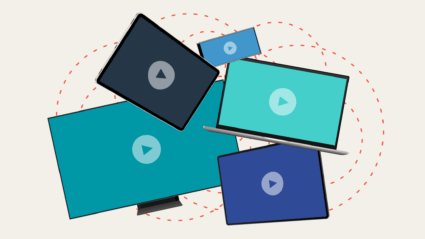If you work in the advertising business, you’ve probably heard the term “viral marketing.” People often toss around the term, but unless you’re someone who has worked on a viral campaign, there is a good chance you are confused about what it really means. To dispel any confusion and get you up to speed with one of the most effective marketing tactics at your disposal, we’ve put together a two-part series we hope will leave you with a better grasp of viral marketing, and maybe even a little inspiration.
What It Isn’t
When explaining a concept as frequently misunderstood as viral marketing, it is often useful to start by defining what it isn’t. That being said, let’s start with the requisite debunking of two common viral marketing myths.
– Viral marketing is easy
Many people think viral marketing involves little more than making an amateur video, putting it up on YouTube, and emailing a couple friends. But that is simply not how it works.
Launching a successful viral campaign involves careful analysis of your goals, extensive research on your target demographic, and highly creative execution. There are always cases where a video or similar content ‘goes viral’ seemingly on accident, but without tactful consideration of the goals of your campaign or a long-term strategy for engaging users, the campaign is unlikely to gain traction or do anything to raise lasting awareness for your brand.
– Viral marketing is free
It is understandable that many people think viral marketing is ‘free’ because in many cases it appears marketers are using resources already available to them like email lists and social networks. But making most content go viral involves much more than blasting it to your email database and posting it to a social profile created solely as an outlet for your viral campaign.
In reality, viral marketing costs money to pay for things like concept creation and design, execution, planning, and the cost of seeding, which often involves paying for social bookmarks and ads on sites where your target demographic gathers. In addition, you must take into account the staff hours required to do the work, track campaign progress, and compile reports. You can also expect to pay for any premium content or collateral you create and all IT costs associated with creating a website, email campaign, or digital newsletter.
What It Is
Viral marketing is the process of creating a compelling viral message, seeding that message, and making it easy and desirable for users to share your message immediately via online mechanisms such as blogs, email, and social networks as well as regular (read: offline) word-of-mouth.
The cornerstone of any viral campaign is stimulating content which can take the form of a microsite, social profile, video, or widget that educates, entertains, and/or helps your target demographic. When consumers share your message with others, it creates a buzz around your brand. This buzz is compounded each time your content is shared, creating a ripple effect and giving your viral campaign the momentum it needs to reach a meaningful number of people and make an impact. Finally, while the goal of any viral campaign is brand awareness and not sales, drawing the attention of a large number of people at once will drive interest in your brand and is likely to lead to sales down the line.
Why Viral Marketing Matters
Print ads, billboards, and TV commercials used to be acceptable ways to reach your target demographic, but times have changed. In today’s media-saturated world, a large number of people are accustomed to ignoring print ads, tuning out billboards, and skipping TV commercials with DVRs and TiVo, making it difficult to spread your message if you rely only on traditional means.
Marketing virally helps circumvent the problem of media saturation and reach people while their guard is down, making it easier to connect and make a lasting impression. Likewise, while many consumers are weary of marketers, few will ignore a recommendation from a trusted family member, friend, or associate. In fact, there are many cases in which peer recommendations will swing an ambivalent consumer in one direction or the other. Rather than wait for consumers to discover you on their own and hope they have an experience positive enough to warrant a recommendation to their peers, marketing to consumers virally allows you to capitalize on the trend of peer-to-peer recommendation, giving consumers a reason to engage with and talk about your brand in the here and now. Plan your viral campaign to coincide with a new product launch, company rebrand, or PR blitz, and the immediate and tangible buzz you create will help drive your underlying initiative.






Responses